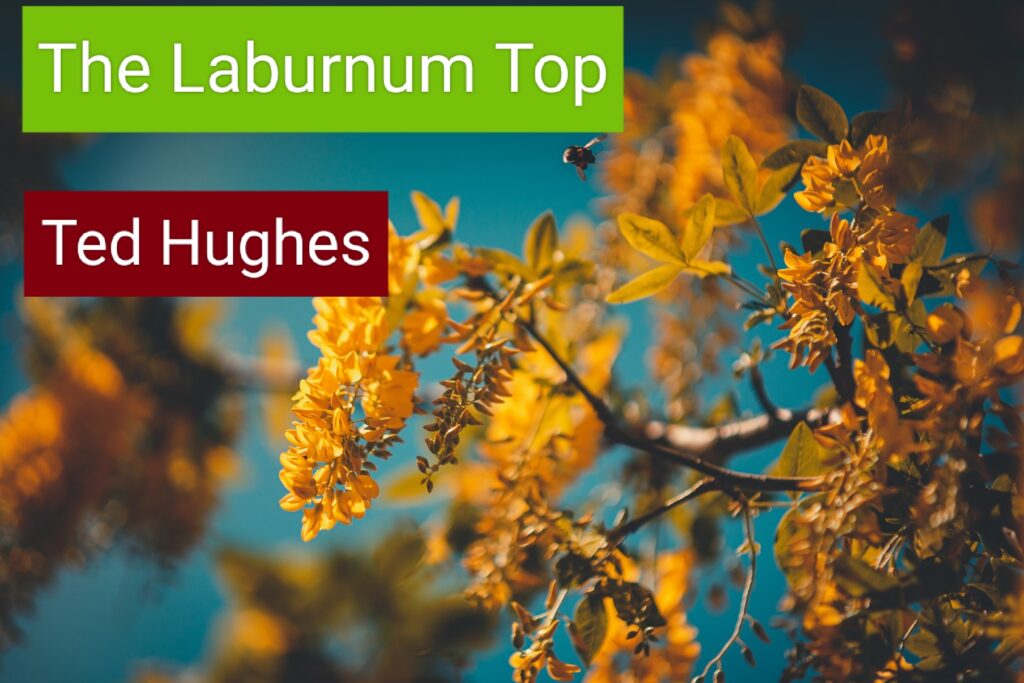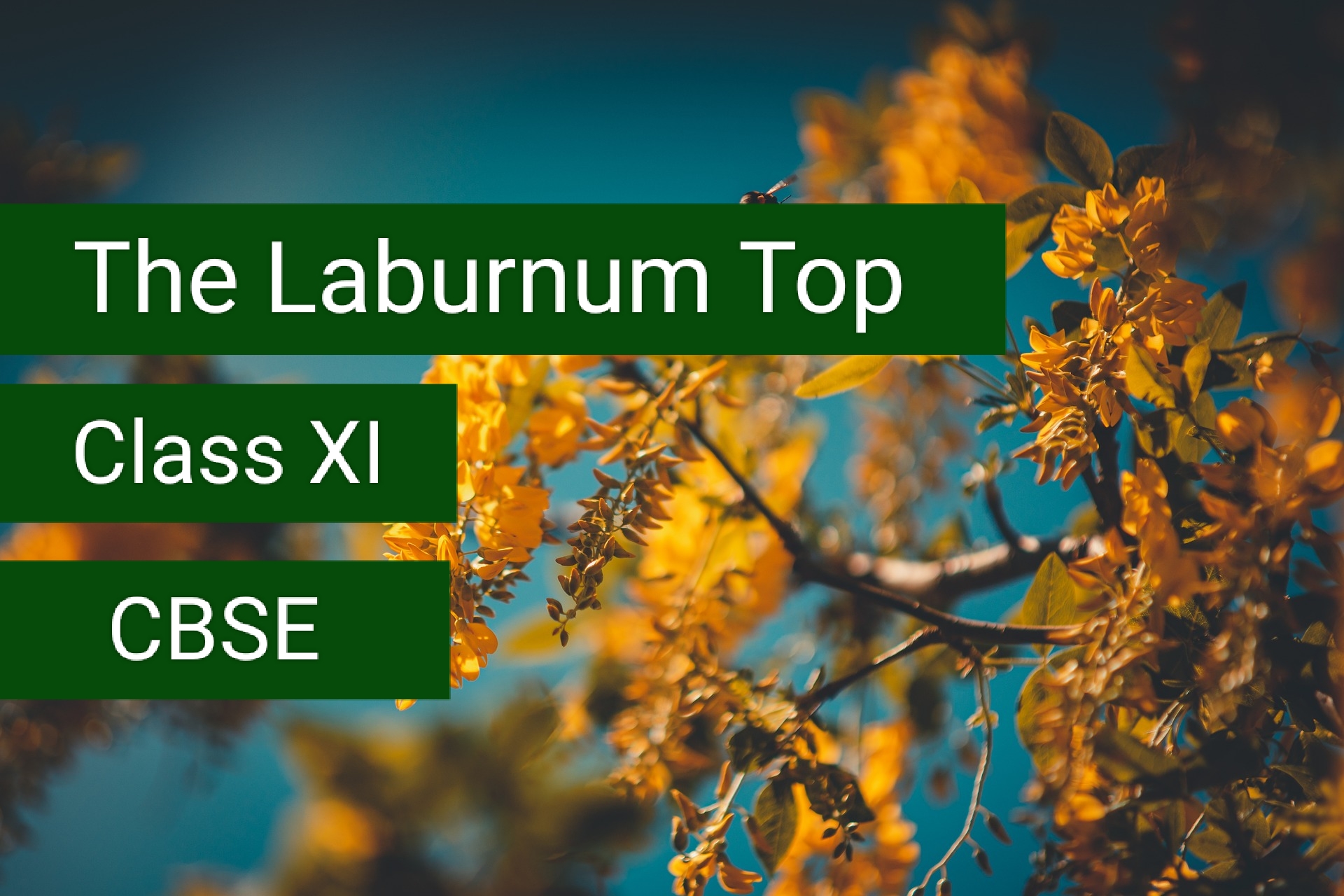The Laburnum Top Questions and answers
By-Ted Hughes
About the poet
Ted Hughes was born in 1930 in Mytholmroyd, Yorkshire. William, his father, was a joiner who served in the First World War. Edith, Hughes’ mother, was a tailor who enjoyed going for walks. After Hughes received praise from his English teacher, she gave him a small used poetry collection.
When Hughes was seven years old, his family purchased a newsagent in Mexborough, South Yorkshire. Hughes attended the local grammar school, where he read Henry Williamson’s Tarka the Otter, and he roamed to Manor Farm, which was on the River Don near Old Denaby. His first animal poem, “The Thought Fox,” and first story, “The Rain Horse,” are both based on its memory. He came to know it “better than any place on earth.”
In 1948, he accepted an open exhibition to study English at Cambridge on the strength of his poetry and spent the next two years mostly reading. He switched to Archaeology and Anthropology after realizing that the course was suffocating his talent.
He got a job after graduating, met and married the poet Sylvia Plath, and in 1957, he entered his first collection, The Hawk in the Rain, for a prize judged by Stephen Spender, Marianne Moore, and W. H. Auden. Hughes appeared to be a radical departure from his contemporaries, who spoke with more reserved, almost courtly diction and expressed the natural rhythms in metrical patterns than Hughes did: The book was published after he won the prize.
Hughes’ writing is extremely diverse and almost always deeply concerned with the connection between industry and nature. It includes critically acclaimed works like Shakespeare and the Goddess of Complete Being (1992), adaptations and translations like Tales from Ovid (1997), and Crow (1970), an epic sequence that was cut short when his partner Assia Wevill committed suicide. Other examples include popular children’s books like The Iron Man (1968). Birthday Letters, his 1998 collection of 88 poems about his relationship with Plath, was an instant best seller and won multiple prizes.
Hughes took over from John Betjeman as Poet Laureate in 1984; The poem “Rain-Charm for the Duchy” was his first. In addition to a firm belief in poetry’s healing properties, he left behind the Arvon Foundation for creative writing and Modern Poetry in Translation: a publication that he and Daniel Weissbort co-founded in 1965 to combat what they perceived as the isolationist tendencies of British poetry.
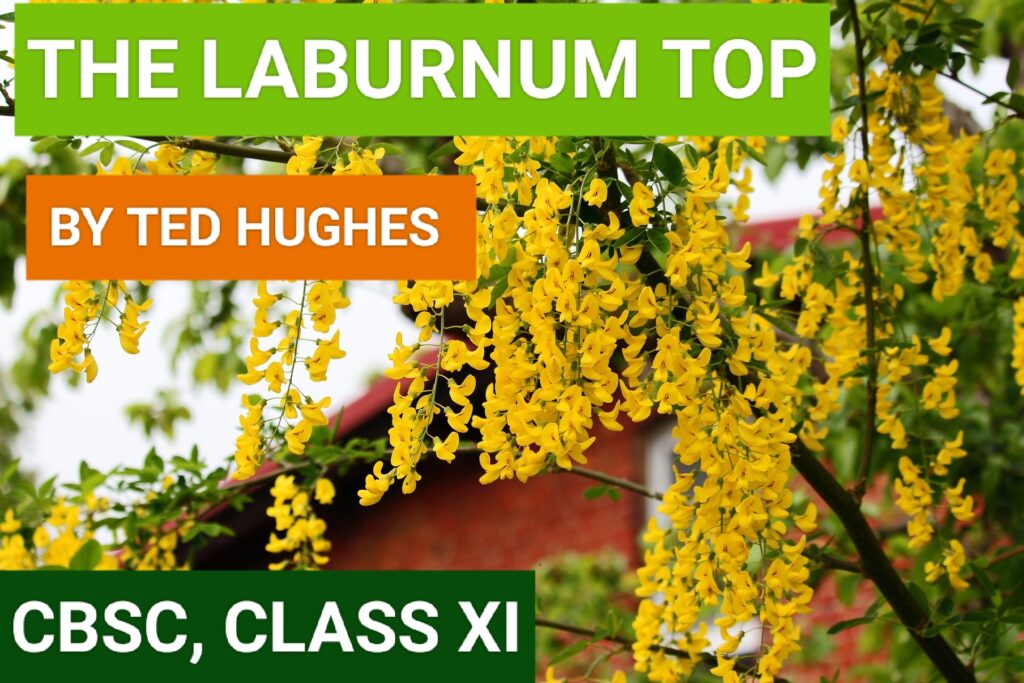
Laburnum Top Summary
The Laburnum Top tree, which is still and silent, is introduced by the poet at the beginning of the poem. In September, the tree’s yellowish leaves began to fall off, giving it the appearance of death and making it very quiet.
The poet then said that when a Goldfinch bird comes to feed her young in the thick of the branch, the tree comes to life. She moves to the other side of the branch and comes chirping. She quickly dives into the branch to reach her children. Her gait is like that of a lizard. Her children begin to move like machines and flap their wings as soon as she enters.
When the bird entered, the tree gained movement and life, but as soon as the bird flew away, the tree once more lost its life.
Short Answer Type Questions
1. When and how does the goldfinch bird enters the Laburnum tree ?
Answer: In September, the goldfinch flocks to the Laburnum tree in a single afternoon.The bird initially eats at the tree’s branch end. It makes short, high sounds and moves its body unconsciously. After that, it enters the branch slowly, abruptly, and carefully.
2. Before the goldfinch bird arrives, how does the poet describe the laburnum tree?
Answer: The Laburnum tree is silent before the goldfinch bird arrives. A few of the tree’s leaves have turned yellow because it is autumn afternoon. Even, the tree’s seeds have all vanished.
3. What changes have taken place in the Laburnum top since the mother goldfinch bird arrived?
Answer: The existence of the young goldfinch birds in the inner part of the Laburnum top becomes apparent after the mother goldfinch bird arrives. In addition, the tree begins to shake as a result of the sounds that the young birds make.
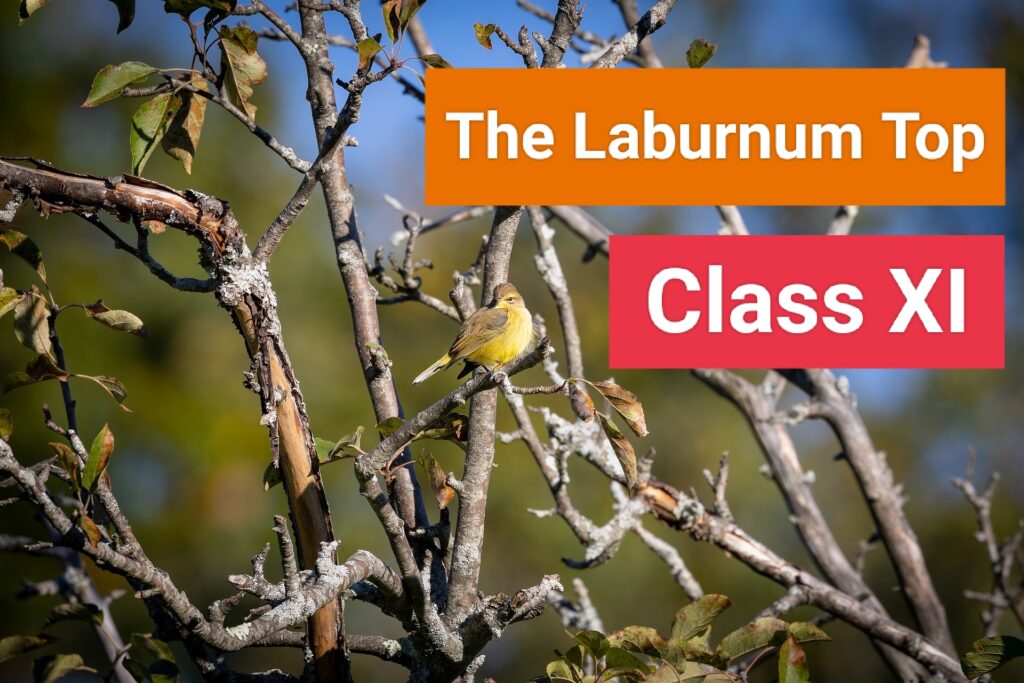
4. How does the entry of the mother goldfinch bird into the inner portion of the branch affect things?
Answer: Baby goldfinch birds twirl and shake their wings in delight as the mother goldfinch arrives in the inner part of the branch. They eventually produce high-pitched sounds. The tree shakes and makes its own sound as a result.
5. What is the mother goldfinch bird doing in the inner part of the Laburnum tree’s branch?
Answer: The mother goldfinch bird provides the young goldfinch birds with food in the inner part of the Laburnum tree. She has arrived for this purpose. She then emerges to the exterior. Her face is still hidden there behind the tree’s yellow flowers and leaves.
6. How does the poem use the color yellow?
Answer: In the poem, the color yellow is used to create great effect. Yellow flowers adorn the Laburnum tree that serves as the background. As is typical in the month of September, some of its leaves have turned yellow. Yellow feathers cover the wings of the goldfinch that visits this tree.
7. Why is the mother Goldfinch compared to an engine.
Answer: The baby goldfinch birds get their energy from the mother bird. Together, these young birds function as a machine. The mother goldfinch bird is the source of energy for the young goldfinch birds i.e, food. It bears much similarity to a mechanical engine.
8. Describe the expression: “barred face identity mask”.
Answer: The goldfinch bird has a distinct black color on its face. As a result, it becomes difficult to identify it wherever its face remains exposed or concealed behind the yellow flowers and leaves of the tree. Consequently, its identity remains concealed under a mask.
9. After giving the young goldfinch everything they need to eat, how does the mother bird react?
Answer: The goldfinch’s mother moves from the inside to the outside of the branch as soon as she has fed all of the young birds. After that, it makes some enigmatic sounds that could be warnings to the young birds. It finally flies off into the sky.
10. In terms of the state of the Laburnum tree, what similarities do you notice between the poem’s beginning and end?
Answer: Laburnum tree is silent in the poem’s opening because the young goldfinch birds do not know that their mother is about to arrive. With the arrival of the mother Goldfinch, the tree becomes enlivened. Again at the end of the poem, the baby birds are quiet because their mother has left them, which is why the tree is silent.
See also : Discovering Tut: The Saga Continues Questions & Answers
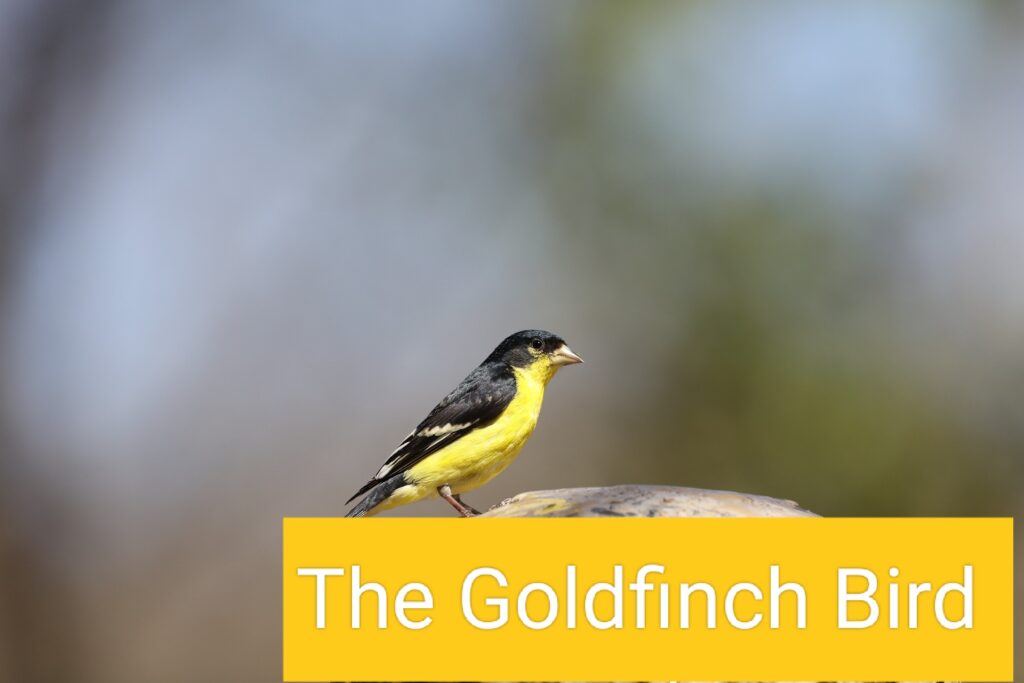
Broad Answer Type Questions
1. What made the poet to take notice of the Goldflinch and what thoughts passed through his mind on seeing it?
Ans-The tree was as quiet as possible. Its branches and leaves were not moved by the breeze. Additionally, it appeared as though the surrounding environment was in a state of tranquility and stupor. The poet also experienced an unusual sense of tranquility as the natural world became so quiet. The passivity was dramatically disturbed by the tiny goldfinch’s arrival. It screamed as usual, hopped from branch to branch, and flew off after trying everything it could to wake the tree up. Even if only for a moment, it enlivened the tree’s surroundings. Everything went completely silent when it left. The poet was greatly taken aback by the effect of such a small bird. He wrote the lines out of surprise and amusement.
2. The poem changes when the goldfinch arrives on the Laburnum top. – Elaborate. Is change good or bad in life?
Answer- The top of the laburnum tree in the poem is silent and still at the beginning of the poem. As the sun shines on it on a September afternoon. There is hardly any activity there , but when the goldfinch arrives, it suddenly turns into an exciting place. The Chirrup and tweeting of the chicks and the goldfinch break the place’s silence.
As it broke the monotony, I think that the change brought about by the goldfinch’s appearance on the laburnum top was positive. With the movement of the goldfinch and the chicks’ chirping and twittering, the tree comes to life. Depending on the circumstances, life change can be positive or negative. However, the fact is that life is only ever changing. Therefore, even if a change is negative, we must accept it and move on with our lives.
3. What values do you take away from the poem “The Laburnum Top” about the goldfinch?
Answer: “In the poem, the Goldfinch builds its nest on the top of the laburnum tree. Her chicks stay in the nest while the mother goldfinch regularly leaves to find food for her young. This demonstrates her caring nature and emphasizes the virtues of maternal affection and care for children.
The poem also captures the goldfinch’s movements as another aspect. She abruptly reaches the top of the laburnum and is extremely aware of her surroundings. The poet has compared her movement to that of a lizard, which is swift. Nevertheless, there is a reason behind her sudden and alert movement. To avoid being noticed by any predator, she is moving in this manner. She doesn’t want any predators to know that her chicks are resting in her nest on the top of the laburnum because if they did, the predators could kill or harm them. This act of the goldfinch demonstrates to her offspring the values of safety and security.
